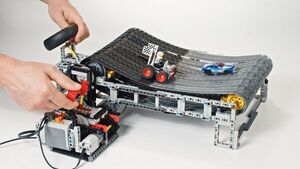2022-11-17 - Nº 394
Editorial
Esta é a Newsletter Nº 394 que se apresenta com o mesmo formato que as anteriores. Se gostar da Newsletter partilhe-a!
Todas as Newsletters encontram-se indexadas no link.
Esta Newsletter tem os seguintes tópicos:
Faz hoje anos que nascia, em 1597, o astrónomo e matemático inglês Henry Gellibrand. Ele co-descobriu (com John Marr) a variação secular geomagnética. Isto refere-se à declinação magnética do campo magnético da Terra, o ângulo entre o norte magnético e o norte verdadeiro, mudando numa escala temporal a longo prazo ao longo dos anos. Ele detectou que a direcção de uma agulha de bússola em Londres tinha mudado em sete graus ao longo de um período de meio século. Tornou-se professor de astronomia no Gresham College, Londres, a 2 de Janeiro de 1627. Os seus manuais de navegação ajudaram a melhorar a navegação inglesa na altura. Usando manuscritos deixados inacabados quando o seu amigo Henry Briggs morreu (1630), completou o volume dois da Trigonometrica Britannica de Briggs, em 1633. Gellibrand publicou A Discourse Mathematicall on the Variation of the Magneticall Needle, em 1635.
Faz também hoje anos que nascia, em 1790, o astrónomo o matemático alemão August Ferdinand Möbius. Ele ficou conhecido pelo seu trabalho em geometria analítica e topologia, especialmente recordado como um dos descobridores da faixa de Möbius, que tinha descoberto em 1858. Uma faixa de Möbius é uma superfície bidimensional com apenas um lado. Pode ser construída em três dimensões, como se segue. Pegar numa tira rectangular de papel e unir as duas extremidades da tira de modo a que esta tenha uma torção de 180 graus. É agora possível começar num ponto A da superfície e traçar um caminho que passa pelo ponto que aparentemente se encontra do outro lado da superfície de A. Embora a sua obra mais famosa seja em matemática, Möbius publicou um trabalho importante em astronomia.
Faz igualmente hoje anos que nascia, em 1835, o físico e engenheiro electrotécnico norte-americano William Arnold Anthony. Ele iniciou e desenvolveu um dos primeiros cursos de engenharia electrotécnica nos EUA (1883), enquanto ensinava no Departamento de Física da Universidade de Cornell, Ithaca, N.Y. Durante 1872-75, Anthony, com a ajuda do estudante George Moler, construiu o primeiro dínamo americano Gramme para corrente contínua, utilizado para alimentar lâmpadas de arco que iluminavam o campus de Cornell, o primeiro sistema americano de iluminação eléctrica ao ar livre. Anthony também construiu um galvanómetro tangente mamute, um dispositivo que utilizava o campo magnético terrestre para a medição de corrente. Ele concebeu o dínamo para o primeiro sistema de distribuição de electricidade subterrânea. Anthony contribuiu para o desenvolvimento de lâmpadas eléctricas cheias de gás.
Faz também hoje anos que nascia, em 1850, o químico industrial escocês George Beilby. Ele desenvolveu (1890) o processo de fabrico de cianeto de potássio (amplamente utilizado para extrair ouro de minério de baixa qualidade) passando amoníaco sobre uma mistura aquecida de carvão vegetal e carbonato de potássio. Beilby entrou na indústria do xisto betuminoso em 1869 e aumentou consideravelmente o rendimento da parafina e do amoníaco ao introduzir a retorta contínua. Notando a destruição de metais pelo amoníaco a altas temperaturas, Beilby pesquisou o fluxo de sólidos. Ele inferiu que quando um sólido é causado a fluir, como no polimento, a superfície cristalina é decomposta numa camada mais dura e mais densa. Embora muito criticada, esta teoria explicou o endurecimento dos metais sob trabalho a frio e deu um estímulo valioso para a continuação da investigação.
Faz igualmente hoje anos que nascia, em 1855, o médico e inventor alemão Carl Gassner. Ele foi especialista em olhos e ouvidos, mas é mais conhecido por inventar a primeira bateria de células secas (1886). Utilizava o mesmo princípio que a célula de Leclanché. Uma barra de manganês de carbono era o ânodo. Em vez de um electrólito líquido, concebeu uma forma de pasta porosa com amoníaco sal, gesso, cloreto de zinco e água. Todos foram selados numa lata de zinco que também era o cátodo. As células Lechanché tinham sido utilizadas para campainhas eléctricas, mas estas eram vulneráveis à quebra e derramamento, bem como necessitavam de água fresca adicionada periodicamente. Para ajudar um armazenista, Gessner concebeu a sua célula seca como uma alternativa melhor. Obteve uma patente alemã (8 Abr 1886), uma patente provisória britânica (No. 18,754 em 22 Dez 1888), e uma patente americana (No. 373,064 em 15 Nov 1887), bem como patentes na Áustria-Hungria, Bélgica e França.
Faz também hoje anos que nascia, em 1865, o astrónomo canadiano John Stanley Plaskett. Ele ficou conhecido pela sua concepção especializada de instrumentos e pelas suas extensas observações espectroscópicas. Concebeu um espectrógrafo excepcionalmente eficiente para o refractor de 15 polegadas e mediu velocidades radiais e encontrou órbitas de estrelas binárias espectroscópicas. Concebeu e supervisionou a construção do reflector de 72 polegadas construído para o novo Observatório Astrofísico Dominion em Vitória e foi nomeado o seu primeiro director em 1917. Aí estendeu o trabalho sobre velocidades radiais e binários espectroscópicos e estudou espectros de estrelas tipo O e B. Na década de 1930 publicou a primeira análise detalhada da rotação da Via Láctea, demonstrando que o sol está a dois terços do centro da nossa galáxia sobre a qual gira uma vez em 220 milhões de anos.
Faz igualmente hoje anos que nascia, em 1865, o químico norte-americano William Merriam Burton. Ele concebeu o primeiro processo de craqueamento térmico que mais do que duplicou a proporção de produção de gasolina a partir do petróleo bruto, utilizando calor elevado e alta pressão. A mistura de petróleo bruto de vários hidrocarbonetos pode ser separada em vários grupos de constituintes por meios físicos, normalmente a destilação. O seu processo de craqueamento térmico (patenteado a 7 de Janeiro de 1913, nº 1.049.667) reformou quimicamente moléculas mais longas de componentes menos voláteis em moléculas mais pequenas, duplicando assim o rendimento da gasolina necessária para alimentar a indústria automóvel. Durante os seus primeiros 15 anos de utilização, o processo poupou mais de mil milhões de barris de petróleo bruto. Em 1937, a invenção do cracking catalítico superou o processo Burton, mas continua em larga utilização.
Faz também hoje anos que nascia, em 1902, o físico húngaro-americano Eugene Wigner. Ele partilhou o Prémio Nobel da Física de 1963 (com Maria Goeppert Mayer e Johannes Hans Jensen) pela sua visão da mecânica quântica, pelas suas contribuições para a teoria do núcleo atómico e das partículas elementares, particularmente através da descoberta e aplicação de princípios de simetria fundamentais. Fez muitas contribuições para a física nuclear e desempenhou um papel proeminente no desenvolvimento da bomba atómica e da energia nuclear.
Faz igualmente hoje anos que nascia, em 1906, o engenheiro, piloto de automóveis de corrida e industrial japonês Soichiro Honda. Ele fundou a Honda Motor Company, fabricante de motociclos e automóveis. Nascido em Iwata Gun, Japão, a sua carreira começou como aprendiz de garagem (1922), o que levou à abertura da sua própria garagem em 1928. Começou a fabricar com uma fábrica de anéis de pistão (1934) que se expandiu para motocicletas em 1948, seguida pelo lançamento de um carro desportivo e de um camião ligeiro em 1963. Soichiro Honda reformou-se em 1973, e foi nomeado "conselheiro supremo".
Por fim, faz hoje anos que nascia, em 1922, o bioquímico norte-americano Stanley Cohen. Ele partilhou (com Rita Levi-Montalcini) o Prémio Nobel da Fisiologia ou Medicina de 1986 "pelas suas descobertas de factores de crescimento". A sua investigação foi sobre o factor de crescimento epidérmico (EGF), uma proteína produzida no corpo que está envolvida no crescimento celular normal, diferenciação, cura de feridas, e outros eventos de desenvolvimento no corpo. Por exemplo, descobriu que em ratos recém-nascidos, causaria uma dentição mais precoce e abertura dos olhos. EGF e NGF (o factor de crescimento nervoso estudado por Levi-Montalcini) foram os primeiros de uma série de substâncias de sinal regulador de crescimento agora conhecidas. A sua descoberta levou a uma maior compreensão dos resultados de muitas doenças, tais como malformações do desenvolvimento, alterações degenerativas na demência senil, atraso na cicatrização de feridas e tumores.
Em 1869, o Canal de Suez no Egipto foi aberto com uma cerimónia em que participou a Imperatriz francesa Eugénie (esposa de Napoleão III). O canal de 100 milhas de comprimento atravessa o Istmo do Suez, ligando assim os mares Mediterrâneo e Vermelho, e fornecendo uma rota de transporte directo para o comércio entre a Europa e a Ásia. A sua construção foi realizada pelo engenheiro francês, Ferdinand de Lesseps. Como antigo cônsul francês no Cairo, de Lesseps tinha feito um acordo (1854) com o governador otomano do Egipto, permitindo a formação da Companhia do Canal de Suez (1856) com os direitos de construir e operar o canal durante 99 anos. A escavação começou a 24 de Abril de 1859, à mão, com trabalhos forçados. O progresso melhorou com dragas mecânicas e pás a vapor europeias, mas foi atrasado por disputas laborais e por uma epidemia de cólera.
Em 1970, foi emitida uma patente americana para o rato de computador - um "X-Y Position Indicator for a Display System" (No. 3541541). O inventor foi Doug Engelbart. No laboratório, ele e os seus colegas chamaram-lhe "rato", depois do seu cabo de cauda. O primeiro rato era um simples bloco de madeira escavado, com um único botão de pressão no topo. Engelbart tinha concebido isto como uma ferramenta para seleccionar o texto, movê-lo e manipulá-lo de outra forma. Era um elemento chave do seu projecto maior - o NLS (oN Line System), um computador que ele e alguns colegas do Stanford Research Institute tinham construído. O NLS também permitiu que dois ou mais utilizadores trabalhassem no mesmo documento a partir de estações de trabalho diferentes.
E nesta semana que passou foi lançado o Fedora 37, uma grande actualização desta distro patrocinada pela Red Hat que vem com algumas das mais recentes e maiores tecnologias GNU/Linux. O Fedora Linux 37 é uma das distribuições GNU/Linux mais previstas do ano e não desilude os fãs. É suportada pelo mais recente e maior kernel Linux 6.0 e utiliza o mais recente ambiente de trabalho GNOME 43 por defeito para a sua edição emblemática da Estação de Trabalho Fedora. O Fedora 37 também vem com boas notícias para os utilizadores do Raspberry Pi 4, uma vez que este lançamento introduz o apoio oficial ao popular computador, incluindo as variantes 4B, 400, e CM4, graças à implementação de gráficos acelerados utilizando a GPU V3D, juntamente com algumas melhorias gerais mais amplas.
Também nesta semana que passou foi feito o lançamento bem sucedido do Sistema de Lançamento Espacial da NASA (SLS), o foguetão mais poderoso do mundo, a nave espacial Orion da agência está a caminho da Lua como parte do programa Artemis. Transportando um Orion não-tripulado, o SLS descolou para o seu teste de voo de estreia à 1:47 da manhã de quarta-feira EST do Launch Pad 39B no Centro Espacial Kennedy da NASA, na Florida. O lançamento é a primeira etapa de uma missão na qual Orion está planeado viajar aproximadamente 40.000 milhas para além da Lua e regressar à Terra ao longo de 25,5 dias. Conhecida como Artemis I, a missão é uma parte crítica da abordagem de exploração da NASA da Lua a Marte, na qual a agência explora em benefício da humanidade. É um teste importante para a agência antes de voar como astronautas na missão Artemis II.
Na Newsletter desta semana apresentamos diversas noticias, artigos científicos, projetos de maker e alguns vídeos interessantes. É apresentada a revistar HackSpace Magazine nº 61 de Dezembro.
 João Alves ([email protected])
João Alves ([email protected])
O conteúdo da Newsletter encontra-se sob a licença  Creative Commons Attribution-NonCommercial-ShareAlike 4.0 International License.
Creative Commons Attribution-NonCommercial-ShareAlike 4.0 International License.
Novidades da Semana

Fedora Linux 37 Released with Linux 6.0, GNOME 43, and Official Raspberry Pi 4 Support
"The Fedora Project released today the final version of the Fedora Linux 37 distribution, a major update to this Red Hat-sponsored distro that comes with some of the latest and greatest GNU/Linux technologies. Fedora Linux 37 is one of the most anticipated GNU/Linux distro releases of the year and it doesn’t disappoint fans. It’s powered by the latest and greatest Linux 6.0 kernel and uses the latest GNOME 43 desktop environment by default for its Fedora Workstation flagship edition. The ISOs come with Linux kernel 6.0.7 by default, but the latest Linux 6.0.8 kernel is already available as an update. Also included are the most recent Mesa 22.2 graphics stack and PipeWire 0.3.60 multimedia backend. If you’re not into GNOME, the official Fedora Linux Spins also ship with some of the latest versions of their default desktop environments, namely KDE Plasma 5.26, Xfce 4.16, LXQt 1.1.0 (LXQt 1.2.0 should be available as an update), MATE 1.26, and Cinnamon 5.4." [...]

Liftoff! NASA’s Artemis I Mega Rocket Launches Orion to Moon
"Following a successful launch of NASA’s Space Launch System (SLS), the most powerful rocket in the world, the agency’s Orion spacecraft is on its way to the Moon as part of the Artemis program. Carrying an uncrewed Orion, SLS lifted off for its flight test debut at 1:47 a.m. EST Wednesday from Launch Pad 39B at NASA’s Kennedy Space Center in Florida. The launch is the first leg of a mission in which Orion is planned to travel approximately 40,000 miles beyond the Moon and return to Earth over the course of 25.5 days. Known as Artemis I, the mission is a critical part of NASA’s Moon to Mars exploration approach, in which the agency explores for the benefit of humanity. It’s an important test for the agency before flying astronauts on the Artemis II mission. “What an incredible sight to see NASA’s Space Launch System rocket and Orion spacecraft launch together for the first time." [...]
Outras Notícias

NXP Introduces High-Performance S32K39 Series MCUs for Modern Electrification Applications
"NXP Semiconductors (NASDAQ: NXPI), the leader in automotive processors, today announced a new S32K39 series of automotive microcontrollers (MCUs) optimized for electric vehicle (EV) control applications. The modern S32K39 MCUs take electrification into the future with high-speed and high-resolution control for increased power efficiency to extend driving range and provide a smoother EV driving experience. The S32K39 MCUs include networking, security and functional safety capabilities beyond traditional automotive MCUs to address the needs of zonal vehicle E/E architectures and software-defined vehicles. The new MCUs enable NXP’s battery management system (BMS) and EV power inverters to provide end-to-end solutions for next-generation EVs. The high-performance S32K39 MCUs are optimized for the intelligent and high-precision control of traction inverters that convert the EV battery’s DC power into alternating current to drive modern traction motors. The MCUs support traditional insulated-gate bipolar transistors (IGBT), as well as newer silicon carbide (SiC) and gallium nitride (GaN) technologies." [...]
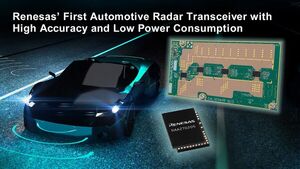
Renesas Unveils First Family of Automotive Radar Transceivers with Industry’s Highest Accuracy and Lowest Power Consumption
"RAA270205 4x4-channel, 76-81GHz Radar Transceiver Incorporates Technology Through Recent Acquisition of Steradian to Build Out Renesas’ ADAS Sensor Fusion Portfolio. Renesas Electronics Corporation (TSE: 6723), a premier supplier of advanced semiconductor solutions, is entering the automotive radar market with the introduction of a 4x4-channel, 76-81GHz transceiver designed to meet the demanding requirements of ADAS (advanced driver assistance systems) and Level 3 and higher autonomous driving applications. Leveraging automotive expertise accumulated through years of global customer engagements, Renesas will incorporate the new RAA270205 high-definition radar transceiver into its growing sensor fusion portfolio, which combines radar, vision systems, and other sensing modalities. Designed in cooperation with Steradian Semiconductors Private Limited, which Renesas acquired earlier this year, the RAA270205 is featured in a Renesas product showcase at electronica, Munich, Germany, November 15-18, 2022. The new transceiver MMIC (monolithic microwave integrated circuit) is especially suited for imaging radar, long-range forward-looking radar and 4D radar, but can also be used for corner and central-processing radar architectures, the so-called “satellite” automotive radar systems. Equipped with 4Tx and 4Rx channels, the RAA270205 supports up to 16 MIMO (multiple-input and multiple-output) channels." [...]
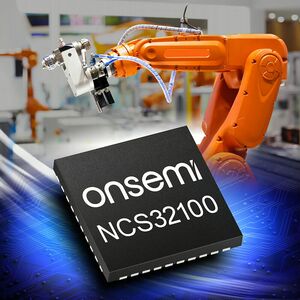
onsemi’s New Approach to Inductive Position Sensing Speeds Up Time-to-Market
"Designed to overcome limitations of inductive sensing, the NCS32100 rotary position sensor brings high speed and accuracy to industrial applications. onsemi (Nasdaq: ON), a leader in intelligent power and sensing technologies, today introduced an innovative dual-inductive rotary position sensor, which convinces with its speed and accuracy. The NCS32100 uses a newly patented approach to inductive position sensing, making it an ideal choice for industrial and robotic applications, where fast-moving robotics and machinery are deployed. While the features of inductive encoders make them very appealing for industrial applications, they have historically been limited to use cases that do not require a high degree of accuracy and operate with low rotational speed. With the NCS32100, onsemi leveraged its 20+ years of expertise designing inductive sensors to combine the reliable benefits of inductive encoders with the accuracy and speed generally associated with mid- to high-end optical encoders. Using a 38mm sensor, the device delivers +/-50 arcsec accuracy at 6,000 RPM." [...]

Intel Introduces Real-Time Deepfake Detector
"As part of Intel's Responsible AI work, the company has productized FakeCatcher, a technology that can detect fake videos with a 96% accuracy rate. Intel’s deepfake detection platform is the world’s first real-time deepfake detector that returns results in milliseconds. Intel’s real-time platform uses FakeCatcher, a detector designed by Demir in collaboration with Umur Ciftci from the State University of New York at Binghamton. Using Intel hardware and software, it runs on a server and interfaces through a web-based platform. On the software side, an orchestra of specialist tools form the optimized FakeCatcher architecture. Teams used OpenVino™ to run AI models for face and landmark detection algorithms." [...]

IBM and Vodafone Join Forces in Exploration of Quantum Computing Technology and Quantum-Safe Cryptography
"IBM (NYSE: IBM) announced today at the IBM Quantum Summit 2022 that Vodafone Group is collaborating with IBM on quantum-safe cybersecurity, and also joining the IBM Quantum Network, which will give the company cloud access to IBM's advanced quantum computing systems, as well as IBM's industry-leading quantum expertise. The multinational telecommunications company will work with IBM to help validate and progress potential quantum use cases in telecommunications. As part of this collaboration, Vodafone will explore quantum computing for a variety of telco use cases. The company will also advance their employees' skills in quantum technology through iterative prototyping led by IBM, as well as actively recruit quantum computing experts, to build a dedicated capability within its ranks. Throughout this engagement, Vodafone will explore how to apply IBM Quantum Safe cryptography technology across its entire and diverse network infrastructure and systems. Future quantum computers will pose a threat to today's standard security, such as public key encryption." [...]
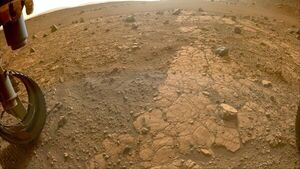
NASA’s Perseverance Rover Investigates Intriguing Martian Bedrock
"Exploring a sediment-rich location in this Mars delta offers tantalizing opportunities for the six-wheeler’s science team. NASA’s Perseverance Mars rover has begun exploring an area the science team calls “Yori Pass” near the base of Jezero Crater’s ancient river delta. They’ve been eager to explore the region for several months after spotting a rock similar to one Perseverance collected samples from in July. The feature is so tantalizing to the scientists because it is sandstone, which is composed of fine grains that have been carried from elsewhere by water before settling and forming stone. Perseverance’s samples are central to the first step in the NASA-ESA (European Space Agency) Mars Sample Return campaign, which began when the rover cached its first cored rock in September 2021. “We often prioritize study of fine-grained sedimentary rocks like this one in our search for organics and potential biosignatures,” said Katie Stack Morgan, Perseverance deputy project scientist at NASA’s Jet Propulsion Laboratory in Southern California." [...]

Renesas to Bolster Low-Power WAN Product Line with NB-IoT-Capable Wireless Module
"RYZ024A Module Provides Cat-M1and NB-IoT Network Support, the Industry’s Lowest Power Mode Operation, and Seamless Connectivity for Battery-Powered IoT Applications. Renesas Electronics Corporation (TSE: 6723), a premier supplier of advanced semiconductor solutions, is expanding its low-power WAN product line as part of its strategy to deliver connectivity devices used for smart cities, smart homes, medical devices and industrial applications. The new RYZ024A supports Cat-M1 and NB-IoT (Narrowband Internet of Things) internet connectivity without the need for a gateway and consumes just 1µA (microamp) while in power savings mode, significantly less than competing products. The RYZ024A supports extended discontinuous reception (eDRX) and has an extended voltage range from 2.2V to 5.5V which makes it ideal for battery-powered applications. Renesas announced the details of the new product at electronica, Munich, Germany, November 15-18, 2022. Similar to its predecessor, the RYZ014A module, the RYZ024A offers seamless Cat-M1 wireless connection capability, but the new module adds the option to integrate NB-IoT." [...]

Hundreds of Renesas’ Intersil-Brand Radiation-Hardened ICs Lift Off Onboard Artemis 1 Mission to the Moon
"Devices on Both the Space Launch System and Orion Capsule Provide Critical Functions for Seminal Mission Heralding Humankind’s Return to the Heavens. Renesas Electronics Corporation (TSE:6723), a premier supplier of advanced semiconductor solutions, today announced that hundreds of its radiation-hardened (rad-hard) integrated circuits (ICs), including over 50 different part numbers, are onboard the Artemis 1 launch that blasted off on November 16. Intersil-brand rad-hard ICs are part of the battery management systems, RS-25 engine control electronics and the launch abort system on the Space Launch System that propelled the mission into space, the most powerful rocket ever built. On the Orion Capsule that will circle the moon, Renesas provided critical components for controller boards, the main flight computer, the docking camera system, the power distribution system and display and panel electronics. The Intersil-brand ICs perform multiple functions, including power management and precision signal processing. Artemis is the ambitious NASA program that will take humankind back to the moon for the first time in more than 50 years." [...]
Ciência e Tecnologia
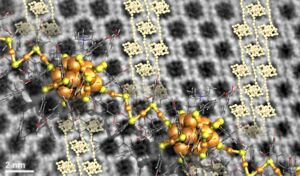
Researchers learn to engineer growth of crystalline materials consisting of nanometer-size gold clusters
"First insights into engineering crystal growth by atomically precise metal nanoclusters have been achieved in a study performed by researchers in Singapore, Saudi Arabia and Finland. The work was published in Nature Chemistry on November 10, 2022. Ordinary solid matter consists of atoms organized in a crystal lattice. The chemical character of the atoms and lattice symmetry define the properties of the matter, for instance, whether it is a metal, a semiconductor or and electric insulator. The lattice symmetry may be changed by ambient conditions such as temperature or high pressure, which can induce structural transitions and transform even an electric insulator to an electric conductor, that is, a metal. Larger identical entities such as nanoparticles or atomically precise metal nanoclusters can also organize into a crystal lattice, to form so called meta-materials." [...]
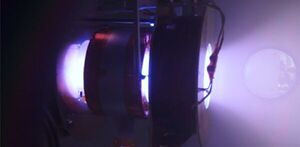
Improving the Performance of Electrodeless Plasma Thrusters for Space Propulsion
"A Tohoku University researcher has increased the performance of a high-power electrodeless plasma thruster, moving us one step closer to deeper explorations into space. Innovations in terrestrial transportation technologies, such as cars, trains, and aircraft, have driven historical technologies and industries so far; now, a similar breakthrough is occurring in space thanks to electric propulsion technology. Electric propulsion is a technique utilizing electromagnetic fields to accelerate a propellant and to generate thrust that propels a spacecraft. Space agencies have pioneered electric propulsion technology as the future of space exploration. Already, several space missions have successfully been completed using electric propulsion devices, such as gridded ion thrusters and Hall thrusters. Solar power is converted into thrust energy when the propellant becomes ionized, i.e., a plasma, and gets accelerated by electromagnetic fields." [...]
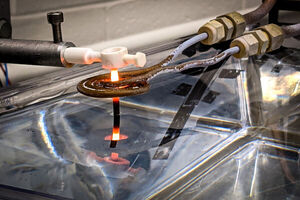
With new heat treatment, 3D-printed metals can withstand extreme conditions
"A technique that transforms the metals’ microscopic structure may enable energy-efficient 3D printing of blades for gas turbines or jet engines. A new MIT-developed heat treatment transforms the microscopic structure of 3D-printed metals, making the materials stronger and more resilient in extreme thermal environments. The technique could make it possible to 3D print high-performance blades and vanes for power-generating gas turbines and jet engines, which would enable new designs with improved fuel consumption and energy efficiency. Today’s gas turbine blades are manufactured through conventional casting processes in which molten metal is poured into complex molds and directionally solidified. These components are made from some of the most heat-resistant metal alloys on Earth, as they are designed to rotate at high speeds in extremely hot gas, extracting work to generate electricity in power plants and thrust in jet engines. There is growing interest in manufacturing turbine blades through 3D-printing, which, in addition to its environmental and cost benefits, could allow manufacturers to quickly produce more intricate, energy-efficient blade geometries." [...]

Technion and MIT collaborate to transform bacterial cells into living artificial neural circuits. Applications include biomanufacturing and therapeutics
"Bringing together concepts from electrical engineering and bioengineering tools, Technion and MIT scientists collaborated to produce cells engineered to compute sophisticated functions – “biocomputers” of sorts. Graduate students and researchers from Technion – Israel Institute of Technology Professor Ramez Daniel’s Laboratory for Synthetic Biology & Bioelectronics worked together with Professor Ron Weiss from the Massachusetts Institute of Technology to create genetic “devices” designed to perform computations like artificial neural circuits. Their results were recently published in Nature Communications. The genetic material was inserted into the bacterial cell in the form of a plasmid: a relatively short DNA molecule that remains separate from the bacteria’s “natural” genome. Plasmids also exist in nature, and serve various functions. The research group designed the plasmid’s genetic sequence to function as a simple computer, or more specifically, a simple artificial neural network." [...]

An on-chip time-lens generates ultrafast pulses
"New device opens the doors to applications in communication, quantum computing, astronomy. Femtosecond pulsed lasers — which emit light in ultrafast bursts lasting a millionth of a billionth of a second — are powerful tools used in a range of applications from medicine and manufacturing, to sensing and precision measurements of space and time. Today, these lasers are typically expensive table-top systems, which limits their use in applications that have size and power consumption restrictions. An on-chip femtosecond pulse source would unlock new applications in quantum and optical computing, astronomy, optical communications and beyond. However, it’s been a challenge to integrate tunable and highly efficient pulsed lasers onto chips. Now, researchers from the Harvard John A. Paulson School of Engineering and Applied Sciences (SEAS) have developed a high-performance, on-chip femtosecond pulse source using a tool that seems straight out of science fiction: a time lens." [...]

A Low-Cost Robot Ready for Any Obstacle
"This little robot can go almost anywhere. Researchers at Carnegie Mellon University's School of Computer Science and the University of California, Berkeley, have designed a robotic system that enables a low-cost and relatively small legged robot to climb and descend stairs nearly its height; traverse rocky, slippery, uneven, steep and varied terrain; walk across gaps; scale rocks and curbs; and even operate in the dark. "Empowering small robots to climb stairs and handle a variety of environments is crucial to developing robots that will be useful in people's homes as well as search-and-rescue operations," said Deepak Pathak, an assistant professor in the Robotics Institute. "This system creates a robust and adaptable robot that could perform many everyday tasks." The team put the robot through its paces, testing it on uneven stairs and hillsides at public parks, challenging it to walk across stepping stones and over slippery surfaces, and asking it to climb stairs that for its height would be akin to a human leaping over a hurdle. The robot adapts quickly and masters challenging terrain by relying on its vision and a small onboard computer." [...]

Hard to crack hardware
"Advanced electronic components based on spintronic concepts could add additional protection to smart devices. Next-generation electronic devices could feature enhanced security systems built directly into their circuitry to help fend off malicious attacks. Protective “logic locks” — based on an advanced branch of electronics called spintronics — could be incorporated into the integrated circuits of electronic chips to defend chip security, KAUST researchers have shown. “The need for hardware-based security features reflects the globalized nature of modern electronics manufacture,” explains Yehia Massoud from KAUST. Electronics companies usually employ large specialized, external foundries to produce their chips, which minimizes costs but introduces potential vulnerabilities to the supply chain. The circuit design could simply be illegally copied by an untrusted foundry for counterfeit chip production or could be maliciously modified by the incorporation of “hardware Trojans” into the circuitry that detrimentally affects its behavior in some way." [...]
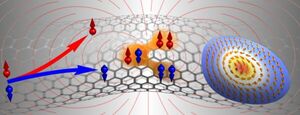
Graphene scientists explore electronic materials with nanoscale curved geometries
"In a recently published paper in Nature Electronics, an international research group from Italy, Germany, the UK, and China examined significant development directions in the field of electronic materials with curved geometries at the nanoscale. From microelectronic devices with enhanced functionality to large-scale nanomembranes consisting of networks of electronic sensors that can provide improved performance. The scientists argue that exciting developments induced by curvature at the nanoscale allow them to define a completely new field – curved nanoelectronics. The paper examines in detail the origin of curvature effects at the nanoscale and illustrates their potential applications in innovative electronic, spintronic and superconducting devices. Curved solid-state structures also offer many application opportunities. On a microscopic level, shape deformations in electronic nanochannels give rise to complex three-dimensional spin textures with an unbound potential for new concepts in spin-orbitronics, which will help develop energy-efficient electronic devices." [...]
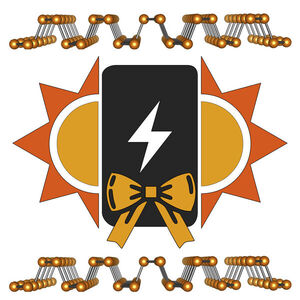
Atomically-thin ribbons can dramatically improve batteries needed for clean transport, as well as solar power
"PNRs are ribbon-like strands of the 2D material phosphorous, which, like graphene, are made of single-atom-thick layers of atoms. They were first created in 2019 by a team led by Professor Chris Howard of UCL following over a hundred theoretical papers predicting that they would have a range of fascinating and useful properties. PNRs quickly found a role in their first energy device in solar cells in 2021, led by Dr Tom Macdonald at Queen Mary University of London/Imperial College London and supported by the team at UCL. He showed that PNRs can be simply printed as an extra layer to benefit solar cell functionality and efficiency by improving ‘hole mobility’. ‘Holes’ are the opposite partner of electrons in electrical transport, so improving their mobility (a measure of the speed at which they move through the material) helps electrical current move more efficiently between layers of the device. Now, QMUL and UCL have combined again to provide a vision for how PNRs can be used to help tackle the energy crisis." [...]
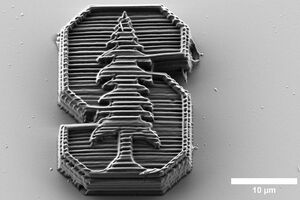
New nanoscale 3D printing material designed by Stanford engineers could offer better structural protection for satellites, drones, and microelectronics
"Engineers have designed a new material for nanoscale 3D printing that is able to absorb twice as much energy as other similarly dense materials and could be used to create better lightweight protective lattices. Science fiction envisions rapid 3D printing processes that can quickly create new objects out of any number of materials. But in reality, 3D printing is still limited in the properties and types of materials that are available for use, especially when printing at very small scales. Researchers at Stanford have developed a new material for printing at the nanoscale – creating structures that are a fraction of the width of a human hair – and used it to print minuscule lattices that are both strong and light. In a paper published in Science, the researchers demonstrated that the new material is able to absorb twice as much energy than other 3D-printed materials of a comparable density. In the future, their invention could be used to create better lightweight protection for fragile pieces of satellites, drones, and microelectronics." [...]
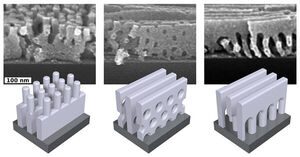
Scientists Build Nanoscale Parapets, Aqueducts, and Other Shapes
"Array of novel nanoscale architectures formed through guided self-assembly could yield materials with improved electronic, optical, and mechanical properties. Scientists at the U.S. Department of Energy’s (DOE) Brookhaven National Laboratory have developed a new way to guide the self-assembly of a wide range of novel nanoscale structures using simple polymers as starting materials. Under the electron microscope, these nanometer-scale structures look like tiny Lego building blocks, including parapets for miniature medieval castles and Roman aqueducts. But rather than building fanciful microscopic fiefdoms, the scientists are exploring how these novel shapes might affect a material’s functions. The team from Brookhaven Lab’s Center for Functional Nanomaterials (CFN) describes their novel approach to control self-assembly in a paper just published in Nature Communications. A preliminary analysis shows that different shapes have dramatically different electrical conductivity." [...]

ITMO Researchers Twist Particles Using Quantum Entanglement
"Twisted particles have found their applications in many fields, such as optomechanics, biology, astrophysics, as well as quantum optics, information science, and communications, where, for instance, they can be used to increase data capacity. However, as these particles are primarily obtained through diffraction gratings, they can’t yet be used for experiments in nuclear and particle physics given the high energies of particles used in contemporary colliders. As a solution to this problem, physicists from ITMO University have suggested a method of obtaining such particles using the so-called generalized measurements, without relying on any special equipment. Their research was supported by a Russian Science Foundation grant, with its results in The European Physical Journal C (Particles and Fields). Why particles should spin Elementary particles, such as photons, electrons, and neutrons, can demonstrate different properties depending on the surrounding conditions and act either as waves or as particles. This phenomenon is known as wave-particle duality and it is believed that, under normal conditions, massive particles such as electrons can retain their wave properties only at lower energies, while at higher ones they can act only as particles." [...]
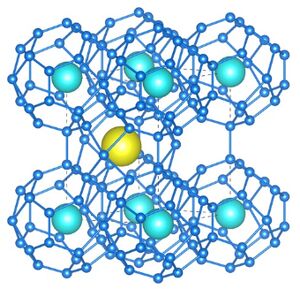
High-temperature superconductivity in lanthanum, yttrium, and cerium ternary hydrides
"Researchers reveal new crystal structures of hydride compounds showing high-temperature superconductivity using data science and supercomputer simulations High-temperature superconductors have been a point of interest over the past decade. Ternary hydrides composed of lanthanum and yttrium have exhibited superconductivity at 250 K have recently emerged as potential room temperature superconductors. Now, a group of researchers from Japan investigate the stability and superconductivity of ternary hydrides under high pressures using supercomputer simulations, predicting three compounds with superconductivity at temperatures less than 170 K. These results hold promising for realizing energy-efficient societies. There has been a lot of progress and development in the superconductivity (zero electrical resistance) front owing to its wide range of applications in MRI machines, particle accelerators, and low-loss power cables. However, its widespread use has been limited due to the extremely low temperatures required to maintain the superconducting state. Therefore, over the last decade, a lot of researchers have focused on achieving what is known as "high-temperature superconductivity" or superconductivity above liquid nitrogen temperature." [...]

NIST’s Grid of Quantum Islands Could Reveal Secrets for Powerful Technologies
"Researchers at the National Institute of Standards and Technology (NIST) have created grids of tiny clumps of atoms known as quantum dots and studied what happens when electrons dive into these archipelagos of atomic islands. Measuring the behavior of electrons in these relatively simple setups promises deep insights into how electrons behave in complex real-world materials and could help researchers engineer devices that make possible powerful quantum computers and other innovative technologies. In work published in Nature Communications, the researchers made multiple 3-by-3 grids of precisely spaced quantum dots, each comprising one to three phosphorus atoms. Attached to the grids were electrical leads and other components that enabled electrons to flow through them. The grids provided playing fields in which electrons could behave in nearly ideal, textbook-like conditions, free of the confounding effects of real-world materials. The researchers injected electrons into the grids and observed how they behaved as the researchers varied conditions such as the spacing between the dots." [...]

How does radiation travel through dense plasma?
"First-of-its-kind experimental evidence defies conventional theories about how plasmas emit or absorb radiation. Most people are familiar with solids, liquids, and gases as three states of matter. However, a fourth state of matter, called plasmas, is the most abundant form of matter in the universe, found throughout our solar system in the sun and other planetary bodies. Because dense plasma—a hot soup of atoms with free-moving electrons and ions—typically only forms under extreme pressure and temperatures, scientists are still working to comprehend the fundamentals of this state of matter. Understanding how atoms react under extreme pressure conditions—a field known as high-energy-density physics (HEDP)—gives scientists valuable insights into the fields of planetary science, astrophysics, and fusion energy. One important question in the field of HEDP is how plasmas emit or absorb radiation." [...]
Documentação
A documentação é parte essencial do processo de aprendizagem e a Internet além de artigos interessantes de explorar também tem alguma documentação em formato PDF interessante de ler. Todos os links aqui apresentados são para conteúdo disponibilizado livremente pelo editor do livro.
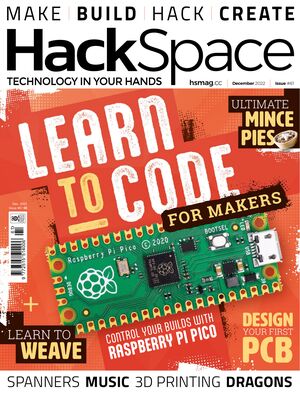
HackSpace magazine #61
"With a little bit of coding, you can breathe life into anything. Discover the building blocks of programming that will take your creations to the next level – whether that’s motors, servos, sensors or just adding blinkenlights. Coding is a superpower! - How to build an elite-level hot air balloon - Get ready for Christmas with flashy festive PCBs… - … and mince pies! - Weave fabric on a tiny loom - Get a taste of what’s coming next in the world of 3D printing" [...]
Projetos Maker
Diversos Projetos interessantes.
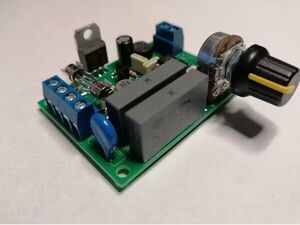
Controlled torque washing machine motor regulator
"How to regulate a washing machine motor controlling its torque to maintain constant the RPM The motor regulator shown in this article is a regulator for universal motors (brushed) at 220V that allows to control the torque or to keep the rotation speed constant at the fixed value as the load varies. It is designed to work with washing machine motors equipped with a tachometer (or speed) sensor such as the MCA 30/64 motor. The name of this regulator is MST_K07_CL The MST_K07_CL regulator implements the automatic torque control: the current of the motor is adjusted so that the rotation speed remains constant at the set value as the load varies. If the load, applied to the motor, tends to reduce / increase the rpm then the regulator will react by bringing the rpm value back to the set one. This type of regulation is obtained by means of the closed loop control that the regulator implements on the motor. This control is based on the electrical signal from the speed sensor which converts the rotation of the motor shaft into a proportional electrical voltage." [...]
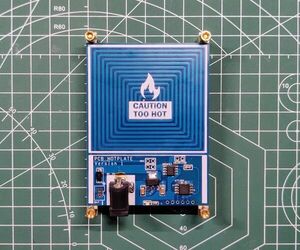
PCB Hotplate Mini Edition
"What's up, everyone? Here's something REALLY HOT: a DIY mini PCB hotplate made entirely from scratch. The idea was to make a small and minimal reflow hotplate that could be used for SMT reflow work on small PCBs. I previously made a huge hotplate that uses an iron element to reflow PCBs, but one problem with it is the size and lack of a temperature control system. This version is small and has a cut-off feature that works by taking readings through a thermistor and cutting the power by turning the MOSFET off. When powered by a 12-volt source, it can reach temperatures of up to 214°C; the temperature can rise even higher when powered by a slightly higher voltage source." [...]
Single axis solar tracker project tutorial
"Single axis solar tracker project tutorial What do you know about solar trackers? A single-axis solar tracker system is a system that follows the light according to its intensity. this is one of the most searched Arduino projects. there are two types of solar tracker projects available single axis solar tracker and dual axis solar tracker. single-axis solar tracker has one motor so it can rotate only on two dimensions. and dual axis can rotate into 4 directions." [...]
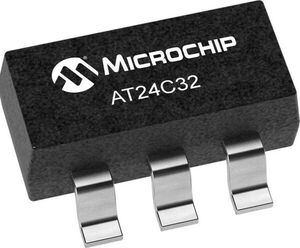
The Most Comprehensive Guide to Programming the AT24C32 / AT24C64
"I love tutorials that DIYers put online. They save so much time, and can make tackling new projects a little less intimidating and easy to comprehend. The problem I continue to run into however is the fact that no one seems to want to take the time to explain how their code or circuitactually works. They're pretty much just like if your setup isn't exactly like mine, than good luck figuring out how to use this code that I put 4 comments on. What I'm here to do is change that. I want to explain the deeper level concepts, so that when it comes time for you to customize the code to your applications, you have a great starting place." [...]
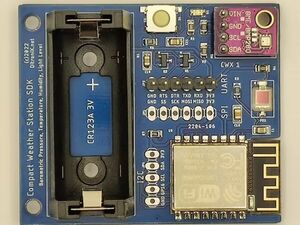
CWX ESP8266 BME280 Compact Weather Station
"Powered by a single CR123 Lithium battery (or external 3V3 DC or USB), this CWX SDK is a Compact Weather Station for IoT Home Automation A local Radio and Electronics Club were looking for a small STEM project which could be used as a platform to encourage electronics and software interests. In addition, for an ATV repeater site, I wanted to put up a weather station. As the site is open to potentially rough elements (being high up! ), a standard weather station was not an ideal option, unless a fair amount was spent on a robust commercial route. Requirements The main elements we wanted to monitor was temperature, relative humidity, barometric pressure and ambient light. The reason for light was that the site in question is solar powered and monitoring light levels had a purpose in energy management." [...]

Superquiz!
"My first real project with Arduino, I had a few things to learn on the way and still plenty more to do! I have commented as much as I feel needed so you should be able to easily modify the code, it's pretty straight forward. Add some features or make use of PROGMEM to store bigger quizzes, I came up short here! Try making your own quiz. I've used a 20x4 LCD for the question and a 16x2 for the answer, this is all I had on hand but you can easily modify it for whatever you want to use, I do recommend a bigger answer LCD though. Simple sound effects are used through the buzzer, they sound pretty cool!" [...]
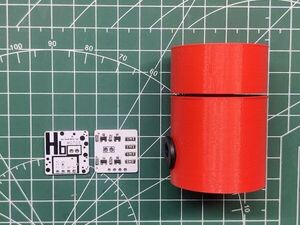
Mini DIY H-Bridge Made From Fets
"Hey, what's up, everyone? So here's something small and interesting. A Mini H-bridge board that can power any DC motor and switch its polarity by using two GPIOs from a microcontroller By using this small 20mm x 20mm board, we can power small DC motors that operate at a lower voltage, like below 5V, from a single Li-ion cell. This driver can be used in projects that require less space to work with, for example, I prepared a mini-rotating table for capturing rotational videos of components. I used this motor driver to power a mini rotating table by putting together a small Attiny85-driven driver setup that is both small and functional. This driver uses four N-channel MOSFETs connected in an H-bridge setup, H-bridge is a unique circuit that can switch the polarity of the voltage applied to any load." [...]

Stream Deck
"This is by far the best way to control your livestreams, any professional streamer uses something like this. This is a so-called STREAM DECK. But this one is homemade and personalized with an Arduino MICRO, a TFT display, push buttons, some RGB LEDs and the Keyboard library from Arduino. You can use this with any streaming software such as twitch, OBS studio, X split and so on. Just press a button, and you could change the scene, disable the microphone or the webcam, add music to your livestream, change to “be right back” and so on, anything that you want. The deck has 7 buttons on the display but if you press the next button you can change to a different template with 7 more buttons." [...]

LED Matrix 32x16 RGB & Ultrasonic Sensor
"An art experiment with 2 x 16 x 16 RGB LED matrix that lights in random positions and colors when the ultrasonic sensor is triggered. Our final goal is to create a prototype of an Art Installation, a videowall made of a matrix of LED lights, creating an interactive panel of pixelated images that interacts with the public. To achieve this goal, this is our first small step in the project: create a smaller version (32x16cm) led panel that randomly lights colorful pixels when the public walks in front of it, or interacts with the ultrasonic sensor. " [...]

RDH RasDuinoHat SDK - Concept Beta Arduino Raspberry PiHat
"This SDK will convert and stack various Arduinos to/from a Raspberry Pi. Thus the name RasDuinoHat project was formed. The Seed to experimenting With so many different Arduino boards available and various SDK's on the market, a challenge to myself back in 2017 era was to make a small PiHat board which was able to interface to the majority of boards, so for example, an Arduino Pro Mini could use a Raspberry Pi shield, or visa versa. The reason for this was that like most of use, we have a box full of 'stuff' and whenever you need a specific board, you cannot find one spare. So the RasDuinoHat was my answer! The interfaces connect to the following, including 3V3 or 5V GPIO: - Arduino Nano - Arduino Pro Mini - Arduino Pro Mini Clone - Arduino Uno - Olimexino 32U4 - NodeMCU ESP8266 - Raspberry Pi 2 - Raspberry Pi 3 - Raspberry Pi Zero - Banana Pi - Orange PI - Nano Pi - Plus many more that use the Pi GPIO format!" [...]
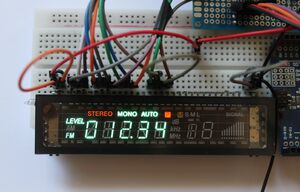
Driving a Salvaged VFD With MAX7219 and an Arduino
"You can get your hands on some very interesting components when disassembling old electronics. One such I've found was this VFD (Vacuum Fluorescent Display). Trying to reverse-engineer the controller was, however not the way to go as all ICs on the board were covered with glob-tops. So I decided to de-solder it from the control board and build a simple driver. Here's how to do it with a MAX7219 (I've had a few left from a previous LED project) and some other components. Supplies: - 1 x VFD display (with 7-segment characters) - 5 x BC547 transistor - 10 x 1M resistor - 6 x 10K resistor - 1 x Arduino - 2 x UDN2981 - 1 x MAX7219 - 1 x 18V power supply" [...]
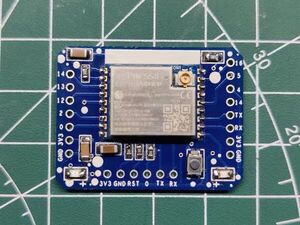
ESPWroom02 Breakout Board
"Made a breakout board for ESPWroom02U Module, Hey, what's up, everyone? So here's something useful: a custom breakout board for using the ESP-WROOM-02U module for tinkering and testing. The ESP-WROOM-02U is an ESP8266EX-based microcontroller that offers the same features as its predecessor, the ESP Series, but is way smaller, making it suitable for implementing into a badge or wearable project. Furthermore, the ESP-WROOM-02U integrates a U.FL connector for adding an external antenna for increasing the WiFi range, which is an eye-catching feature. It comes in two variants, ESP-WROOM-02D and ESP-WROOM-02U, where 02D is without the U.FL connector and 02U comes with it. For using this microcontroller, we need a breakout board of some sort for programming the board and using its I/O pins for controlling stuff." [...]
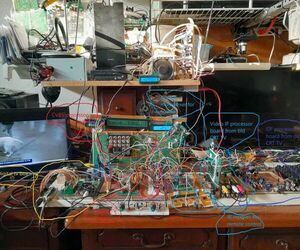
Phase-Locked Loop (PLL) Synthesizer
"What is a phase-locked loop (PLL)? A phase-locked loop (PLL) is an electronic circuit with a voltage or voltage-driven oscillator that constantly adjusts to match the frequency of an input signal. PLLs are used to generate, stabilize, modulate, demodulate, filter or recover a signal from a "noisy" communications channel where data has been interrupted. PLLs are widely used in wireless or radio frequency (RF) applications, including Wi-Fi routers, broadcast radios, walkie-talkie radios, televisions and mobile phones. At its simplest, a phase-locked loop is a closed-loop feedback control circuit that's both frequency- and phase-sensitive. A PLL is not a single component, but a system that consists of both analog and digital components -- interconnected in a "negative feedback" configuration." [...]
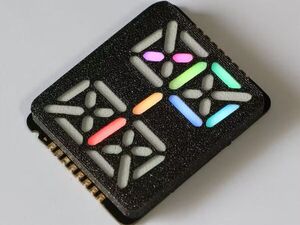
Cistercian Display
"This is a 31 Segments Cistercian Display capable of displaying a number from 0 to 9999 with RGB segments. I have always loved displays, I like anything that emits light and it is controllable, so I have created this new display that consists of the representation of “Cistercian” numbers, this single digit is capable of representing a number from 0 to 9999. The easiest way to make a display is with individual LEDs, so the design is based on 7 segments displays that we all know and several reference pictures and representations that I have seen, that is how I import those shapes to a PCB and added some 0805 LEDs for the first prototype and serial RGB LEDs after that. For the second prototype, the controller that I have decided to use is a simple serial-to-parallel converter from LUMISIL embedded in the same PCB routing fewer pins to the castellated holes and making it easier to use overall and also has the possibility to set a custom constant current source for the LEDs. " [...]
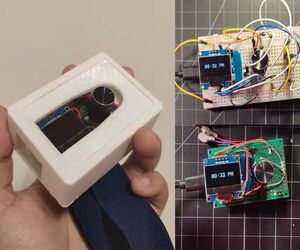
Silent Alarm Clock With OLED Display
"Waking up is hard, especially as a college student who barely gets any sleep. For me alarms are absolutely necessary, because left to myself I would sleep over 12 hours before waking up. But I have non-scientifically come to the following conclusions after years of relying on alarm clocks: Loud alarms leave me with a headache, and a tendency to turn them off in my sleep the moment I hear it.If I lower the alarm volume, I automatically tune out the alarm noise after a while.People sharing dorm with me, and especially roommates absolutely hate my alarm.So I looked at alternate methods of waking up. Alarms on vibrate mode works well, since they are much gentler on my ears and head and wake me up over the span of a longer time. But I have to leave my phone right under me, or my pillow, otherwise I would miss the vibration. But I liked the idea of using vibration as a method of waking up, and thus I came up with the idea to make the silent alarm clock which I can wear." [...]

MIDI Host4RaspberryPi
"Connect & control your old MIDI devices with modern plug in formats. A RaspberryPi Zero works headless extended by a web interface. As I added a modern Keyboard to my Synthesizers from the 90's, I realized the gap between the MIDI interfaces: The standard MIDI interface contains a In and Out, sometimes a Through port with a 5 pin DIN socket. The modern equipment contains a USB Connector or it is "wired" by Bluetooth or (W)LAN. How to bring it together? A RaspberryPi is popular and is used allready in these task." [...]

Mini DIY H-Bridge made from Fets
"Made a simple H Bridge setup by using SMD Mosfets, Arduino is used as control unit. By using this small 20mm x 20mm board, we can power small DC motors that operate at a lower voltage, like below 5V, from a single Li-ion cell. This driver can be used in projects that require less space to work with, for example, I prepared a mini-rotating table for capturing rotational videos of components. I used this motor driver to power a mini rotating table by putting together a small Attiny85-driven driver setup that is both small and functional. This driver uses four N-channel MOSFETs connected in an H-bridge setup, H-bridge is a unique circuit that can switch the polarity of the voltage applied to any load. It's generally used with motors to change their rotation from backward to forward and can be made out of switches." [...]

Modular Display Clock
"This project makes use of a previous project Modular Display Element to make a digital clock, using four of the modules connected together and controlled by a Microbit and an RTC. Supplies: - Microbit V2 (preferred due to built in speaker, V1 will work but will require an external sounder.) - DS3231 RTC - Switch SPST - Kitronik Edge Connector Breakout - Jumper Jerky Junior F/M - Qty 20 - Jumper Jerky Junior F/F - Qty 4 - Jumper Jerky F/F - Qty 3 - Jumper Jerky F/M - Qty 3 - 470R resistor - 1000uF capacitor - Right Angle Header 2 x (3 ways x 1 row) required. - WS2812Neopixel Button LED's * 56 qty. - Enamelled Copper Wire 21 AWG (0.75mm dia. ), or other insulated wire." [...]
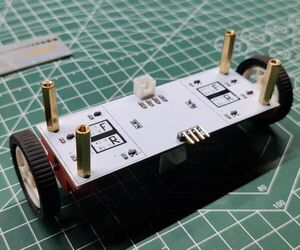
Dual Motor Driver As Robot Base
"Hey everyone, what's up? So here's something awesome, a Microrobot Base that is equipped with a few FETs to make an H-Bridge for driving two motors. These FETs are used for driving small gear micromotors with a 3.7V Li-ion cell. Apparently, common motor drivers like L293D work with a minimum voltage of 4.5V to 36V, so it wouldn't work with our current setup, and we need to increase the battery voltage from a single 3.7V cell to a battery pack composed of two or three cells in series. Electrically, this is ideal, but because we are making a two-wheeled small robot, using a 3-cell battery pack will increase the weight and size. The best option here was to make a DIY motor driver from scratch using Mosfets." [...]
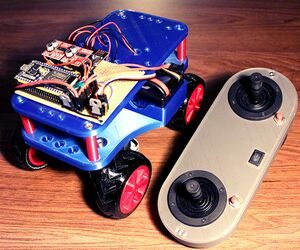
RC Car From SCRATCH!
"In this project we will be creating an RC Car from scratch using 3D printed parts! Which will be used in my next project where we will be making the RC Car fully autonomous, that can drive itself, detect signs, obstacles, traffic lights, and much more. I have made avideothat goes over the whole project and explains each step very clearly. So if you want a video version, I highly recommend watching the video as it is much easier to follow. Supplies Here is a list of all the components used in the project, I have also included links to the exact product used to might it slightly easier for you to find the exact components used. - ESP32, this is used as the on-board micro-controller on the car." [...]
Secção Videos
Videos interessantes.
That's all Folks!




